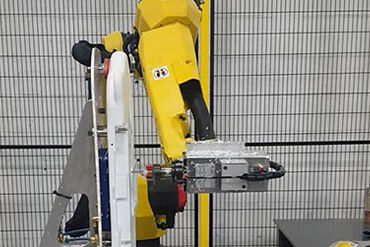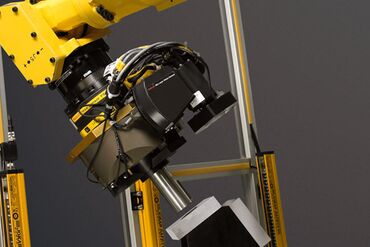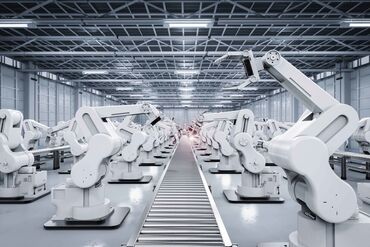What are the Different Types of Robots?
May 31, 2023
There are six different types of industrial robots: cartesian, SCARA, cylindrical, delta, polar and vertically articulated. However, there are several additional types of robot configurations.
There are six different types of industrial robots: cartesian, SCARA, cylindrical, delta, polar and vertically articulated. However, there are several additional types of robot configurations. Each of these types offers a different joint configuration. The joints in the arm are referred to as axes.
Ready to Buy? While we sell a variety of industrial robots, the majority are six-axis articulated robots. Start your selection process by contacting our sales department at or calling 877−762−6881.

Common Types of Industrial Robots
Articulated Robot Arms
This robot design features rotary joints and can range from simple two joint structures to 10 or more joints. The arm is connected to the base with a twisting joint. The links in the arm are connected by rotary joints. Each joint is called an axis and provides an additional degree of freedom, or range of motion. Industrial robots commonly have four or six axes.
What are articulated robots used for?
Packaging Robotic Applications
Machine Tending Robotic Applications
Assembly Robotic Applications
Arc Welding Robotic Applications
Material Handling Robotic Applications
Cartesian Robots
These are also called rectilinear or gantry robots. Cartesian robots have three linear joints that use the Cartesian coordinate system (X, Y, and Z). They also may have an attached wrist to allow for rotational movement. The three prismatic joints deliver a linear motion along the axis.
What are cartesian robots used for?
3D Printing Applications
CNC Automation Machines
Cylindrical Robots
The robot has at least one rotary joint at the base and at least one prismatic joint to connect the links. The rotary joint uses a rotational motion along the joint axis, while the prismatic joint moves in a linear motion. Cylindrical robots operate within a cylindrical-shaped work envelope.
What are cylindrical robots used for?
Coating Robotic Applications
Assembly Robotic Applications
Machine Tending Robotic Applications
Polar Robots
Also called spherical robots, in this configuration the arm is connected to the base with a twisting joint and a combination of two rotary joints and one linear joint. The axes form a polar coordinate system and create a spherical-shaped work envelope.
What are polar robots used for?
Material Handling Robotic Applications
Die Casting Robotic Applications
Injection Molding Applications
SCARA Robots
Commonly used in assembly applications, this selectively compliant arm for robotic assembly is primarily cylindrical in design. It features two parallel joints that provide compliance in one selected plane.
What are SCARA robots used for?
Bio-med Robotic Applications
Assembly Robot Applications
Palletizing Robot Applications
Delta Robots
These spider-like robots are built from jointed parallelograms connected to a common base. The parallelograms move a single EOAT in a dome-shaped work area. Heavily used in the food, pharmaceutical, and electronic industries, this robot configuration is capable of delicate, precise movement.
What are delta robots used for?
Pick and Place Robotic Applications
Six Degrees of Freedom
Typical industrial robots are articulated and feature six axes of motion (6 degrees of freedom). This design allows maximum flexibility. Six-axis robots are ideal for:
Find the right industrial robot for you by contacting our sales department or calling 877−762−6881.
Related Articles
You might be also interested in:

- Featured
Latest Advancements in Material Cutting Robotics
Read about the latest technological advancements in robotic material cutting.

- Featured
Emerging 3D Vision Technologies for Industrial Robots
Learn about the emerging 3D vision technology that businesses are using for industrial robot applications.

- Featured
Most Popular Industrial Robotic Applications for 2021 and Projections
Explore the most popular application trends of 2021 and what to expect in the future.
Let's talk!
Request your quick quote today.
